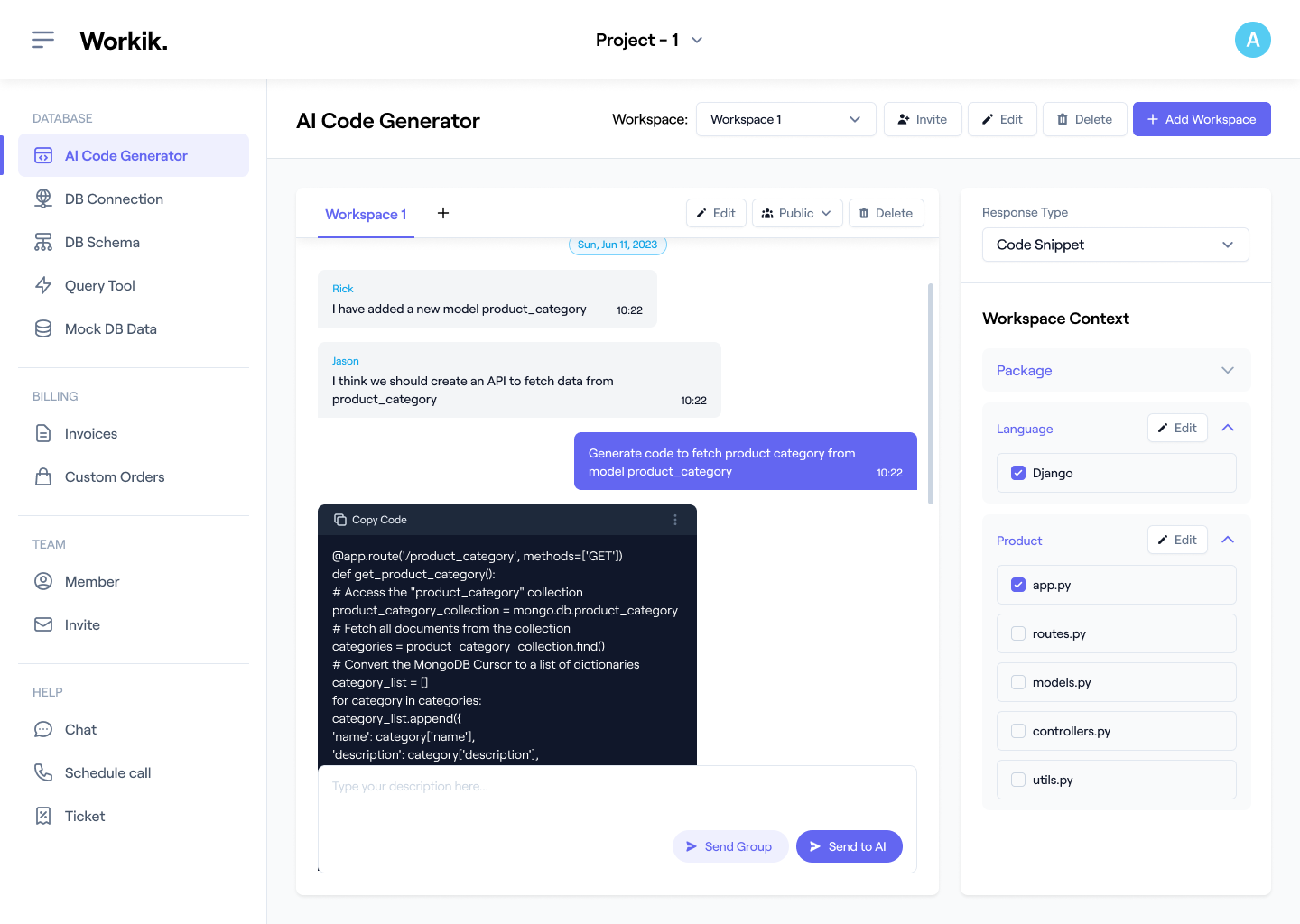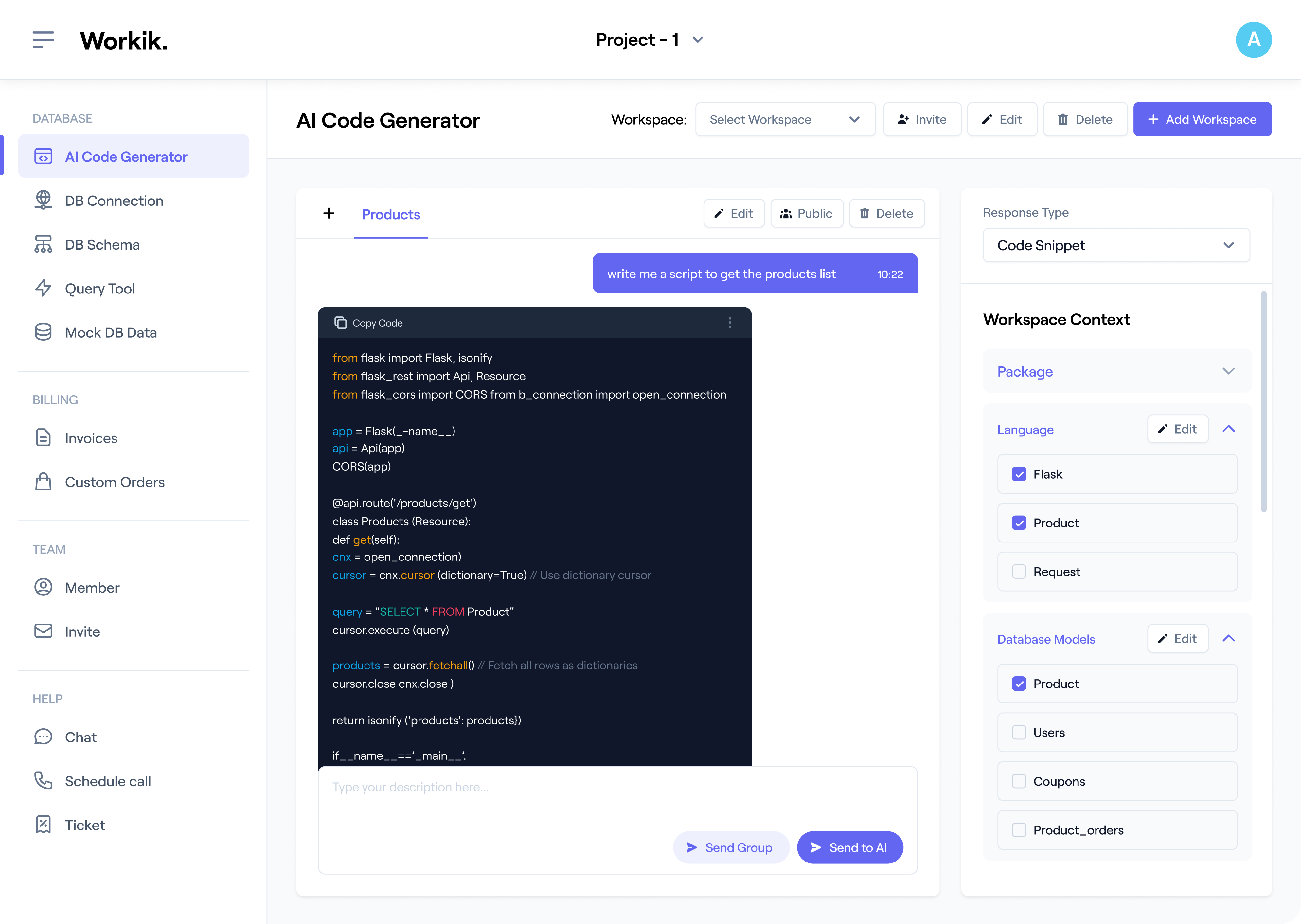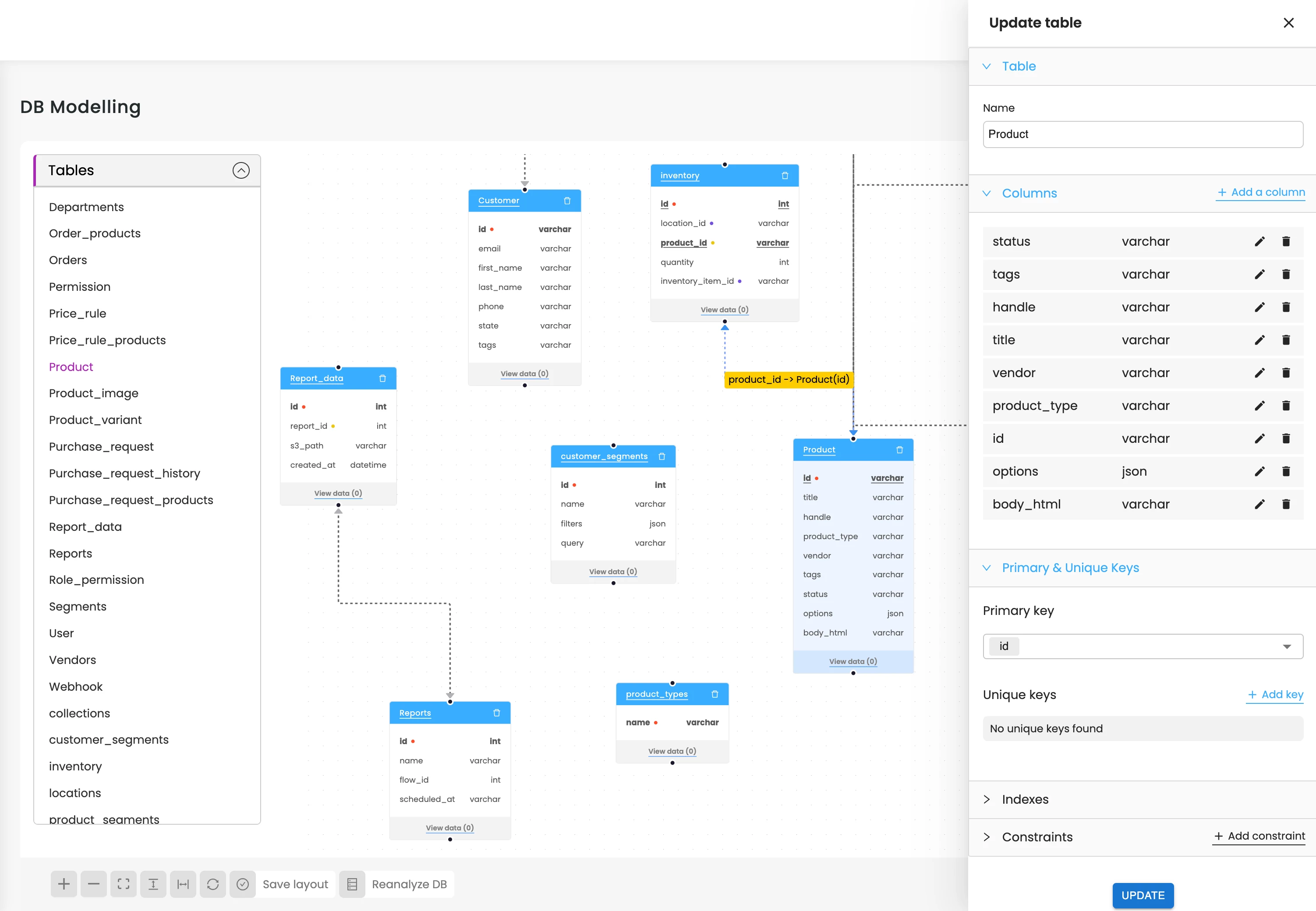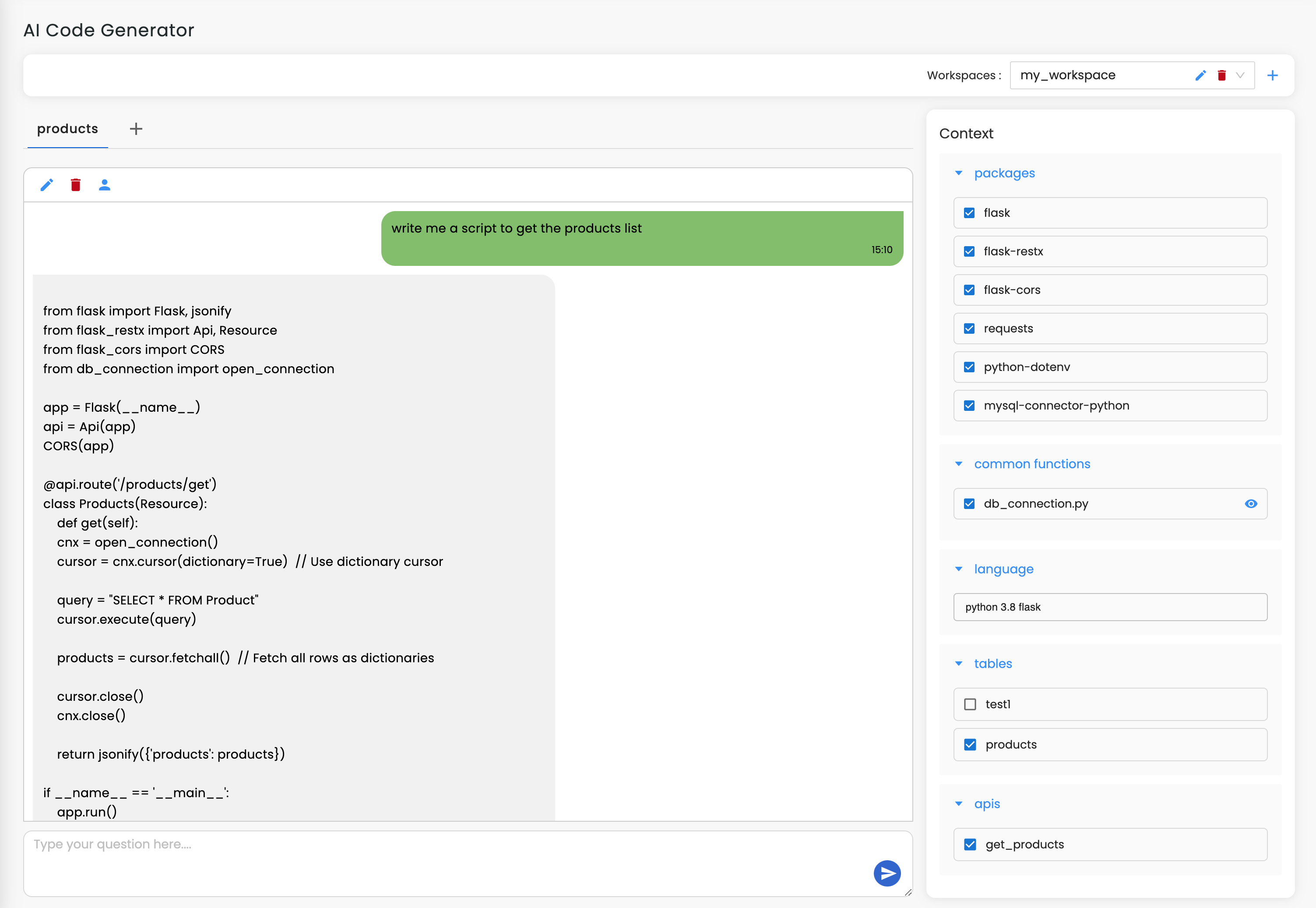Join our community to see how developers are using Workik AI everyday.
Supported AI models on Workik
GPT 5.2, GPT 5.1 Codex, GPT 5.1, GPT 5 Mini, GPT 5, GPT 4.1 Mini
Gemini 3 Flash, Gemini 3 Pro, Gemini 2.5 Pro, Gemini 2.5 Flash
Claude 4.5 Sonnet, Claude 4.5 Haiku, Claude 4 Sonnet, Claude 3.5 Haiku
Deepseek Reasoner, Deepseek Chat, Deepseek R1(High)
Grok 4.1 Fast, Grok 4, Grok Code Fast 1
Models availability might vary based on your plan on Workik
Features

Preserve Layered Architecture
AI maps controllers and services into Go packages like handlers/, services/, and models/.

Guide Conversion with Context
Feed API specs, code snippets, or DB schemas —Workik AI adapts output to match your stack.

Convert Async Logic to Go
AI converts Task<>, async/await, and parallel operations into goroutines, select, or sync.WaitGroup patterns where needed.

Generate Docs as You Convert
Generate side-by-side Go documentation during code transformation for clarity and onboarding.
How it works
Get started instantly with a free Workik account — no setup overhead.
Connect your GitHub, GitLab, or Bitbucket repository — or paste your C# code directly. Workik AI analyzes your file structure, dependencies, and naming patterns to ensure accurate C# to Go conversion with full context.
Use AI to start converting C# code to Golang. AI helps by adjusting syntax, optimizing logic, translating data structures, and even debugging and documenting the output.
Share generated codebase with your team, apply feedback, and sync updates to your repo — all within Workik.


Expand
.png)
.png)
Expand


Expand


Expand


Expand


Expand


Expand


TESTIMONIALS
Real Stories, Real Results with Workik
We migrated our C# microservice to Go in under a week with Workik AI. Requests now run 45% faster and memory usage is down by half.

Priya Raman
Principal Software Engineer
With GitHub integration, our team reviewed and refined the Go output in real-time. It was like adding another senior developer to the squad overnight.
.webp)
Michael Trent
Backend Lead
We migrated services one at a time, and Workik AI kept our mixed C# and Go stack running without a single hiccup.

Ravi Kulkarni
Solutions Architect
What are the popular use cases of the Workik AI C# to Go Code Converter for developers?


Popular use cases of Workik AI-powered C# to Go Code Converter include but are not limited to:
1. Convert C# Web API controllers to Go handlers using frameworks like Gin or Fiber.
2. Migrate Windows Services to Go CLI apps with goroutines and clean concurrency.
3. Translate Entity Framework models and LINQ queries to Go structs and GORM logic.
4. Convert async/await flows into goroutines, channels, or sync-based concurrency.
5. Refactor C# helper classes into Go packages for shared utility logic.
6. Set up multiple workspaces to compare different Go frameworks or architectural styles.
Do I need to set context before converting C# to Go code on Workik?


No — context setting is completely optional, but it helps the AI deliver more precise and personalized output. You can add:
1. Programming languages and packages (e.g., .NET 6, GORM, Gin)
2. Linked repositories from GitHub, GitLab, or Bitbucket for full project context
3. Relevant code files like your .cs models, utility classes, or API clients
4. Database schemas (uploaded in JSON or SQL)
5. API blueprints via Swagger or Postman
6. Common functions reused across your C# app
How does Workik AI handle C# features that don't exist in Go?


When direct equivalents are missing between C# and Go, Workik AI adapts intelligently. For example:
1. LINQ queries are rewritten using Go’s native loops and filtering logic
2. async/await is replaced with goroutines and channels
3. class hierarchies are flattened into idiomatic Go structures using interfaces or function composition
4. nullable types, reflection, and dynamic typing are handled or flagged with Go-compatible strategies
Will the AI understand custom C# logic or libraries?


Workik can better understand your custom logic if you provide related context — like shared .cs files, interface definitions, or helper classes. Even if you're using in-house libraries or domain-specific utilities, adding those files allows AI to produce more accurate Go equivalents.
What if my C# project integrates with third-party services?


Workik can translate external service interactions (like HTTP clients or SDK calls) as long as you include those parts in your context. For example, if your C# service uses HttpClient to hit a payment API, Workik can generate the equivalent http.Client or SDK call in Go with proper response handling.
Can I control how much code Workik converts at once?


Yes. Workik doesn’t force a full-project migration. You can selectively convert one file, one method, or an entire module. For instance, start with UserService.cs and validate its Go output before moving on. Use workspaces to isolate and iterate without affecting your main codebase.
Can't find answer you are looking for?
Request question

Generate Code For Free

C# to Go Code Conversion: Questions & Answers
There are several reasons developers choose to convert C# to Go:
• Improved performance and concurrency with Go’s lightweight goroutines
• Simplified deployment due to Go’s single binary compilation
• Vendor lock-in reduction by moving away from .NET-specific infrastructure
• Scalability for microservices in distributed, cloud-native environments
• Lower memory footprint and faster startup times for APIs and background services
Migrating to Go allows teams to build more efficient systems with fewer runtime dependencies.
C# to Go conversion is particularly useful for:
•
Microservices:
Replacing .NET Core services with Go for lightweight performance
•
API Gateways:
Rebuilding REST APIs with minimal overhead
•
Background jobs:
Migrating long-running workers or schedulers into Go for speed and concurrency
•
Command-line tools:
Converting Windows-based CLI tools into cross-platform Go binaries
•
Legacy refactors:
Breaking down monolithic C# applications into modular Go packages
These use cases benefit from Go’s fast runtime, concurrency model, and easy containerization.
Some of the main technical challenges include:
•
OOP to Composition Shift:
Go lacks traditional classes and inheritance, so object-oriented C# logic must be restructured.
•
Asynchronous Logic Differences:
C#’s async/await must be re-implemented using Go’s goroutines and channels.
•
Type Mapping:
Handling nullable types, complex data models, and LINQ-style expressions requires careful translation.
•
Package Dependencies:
NuGet packages used in C# may have no direct Go counterpart, requiring rewrites or alternatives.
Workik’s AI addresses these challenges by interpreting structure and intent, not just syntax.
Workik AI simplifies the migration process by:
•
Code Conversion:
Translates C# classes, services, and logic into clean, idiomatic Go code.
•
Syntax & Structure Mapping:
Adapts object-oriented patterns in C# to Go’s struct-based modular approach.
•
Boilerplate Generation:
Sets up Go modules, packages, and essential routing or middleware frameworks.
•
Debugging:
Identifies and resolves common issues like null handling, type conversions, and interface mismatches.
•
Test Case Migration:
Converts C# unit tests (e.g., NUnit, xUnit) into Go’s native testing framework.
•
C# vs. Go Explanation:
Highlights how typical C# patterns (LINQ, async, etc.) are represented in Go.
•
Documentation:
Generates structured documentation for the converted Go code and architecture.
•
Performance Optimization:
Refactors Go code for faster compile times, better memory use, and concurrency handling.
Explore more on Workik
Top Blogs on Workik
Get in touch
Don't miss any updates of our product.
© Workik Inc. 2025 All rights reserved.

